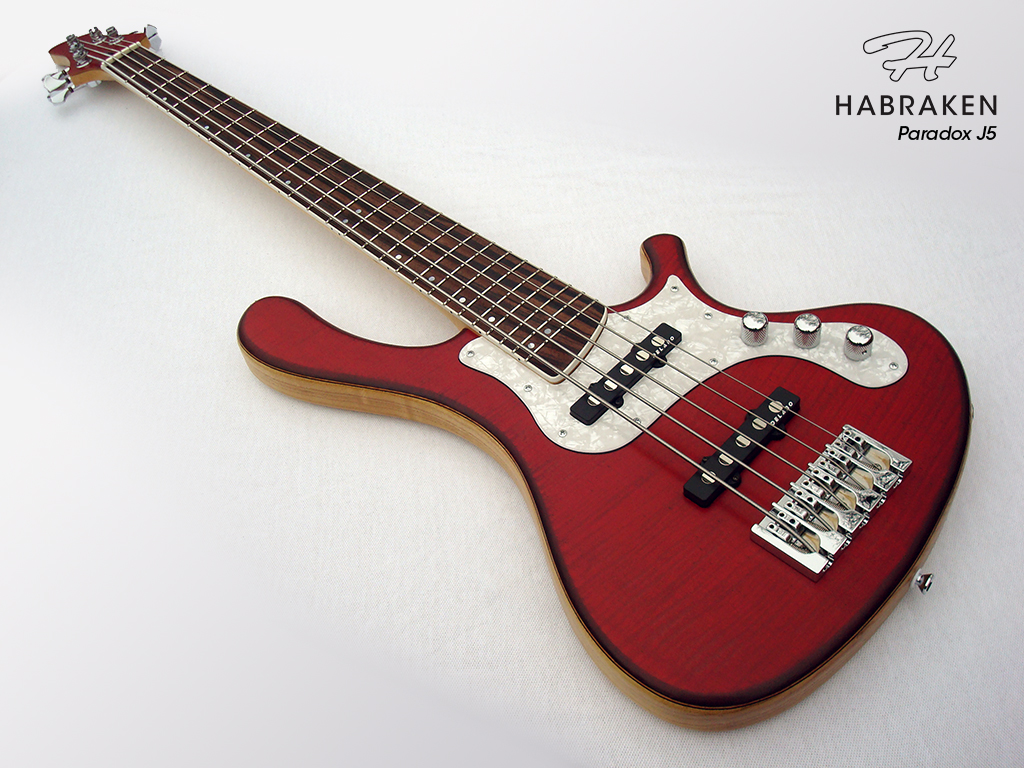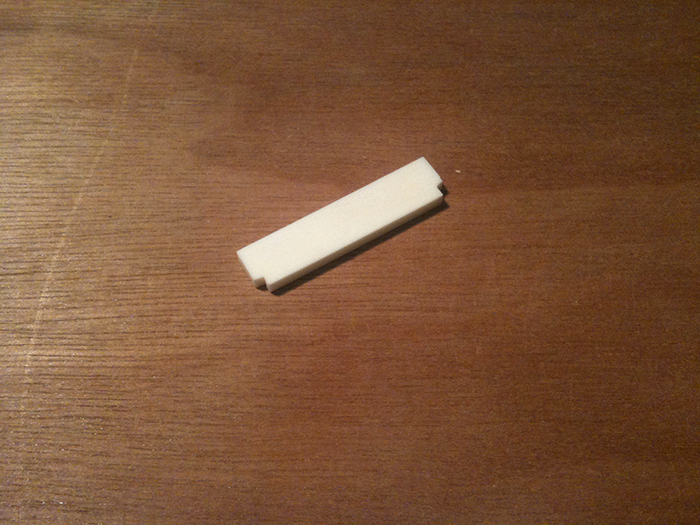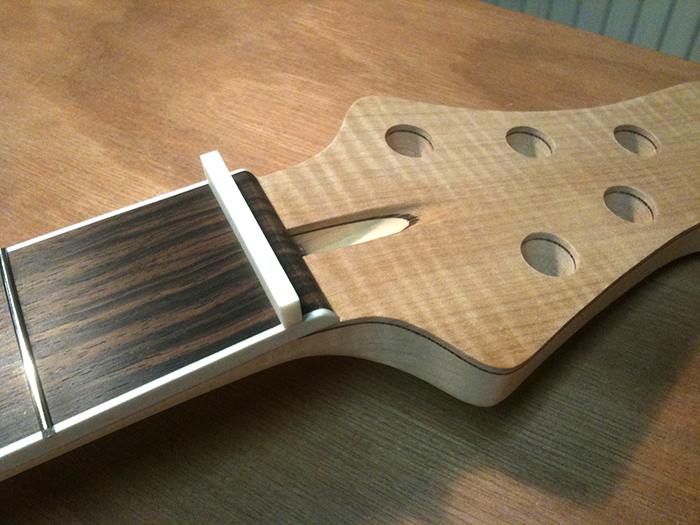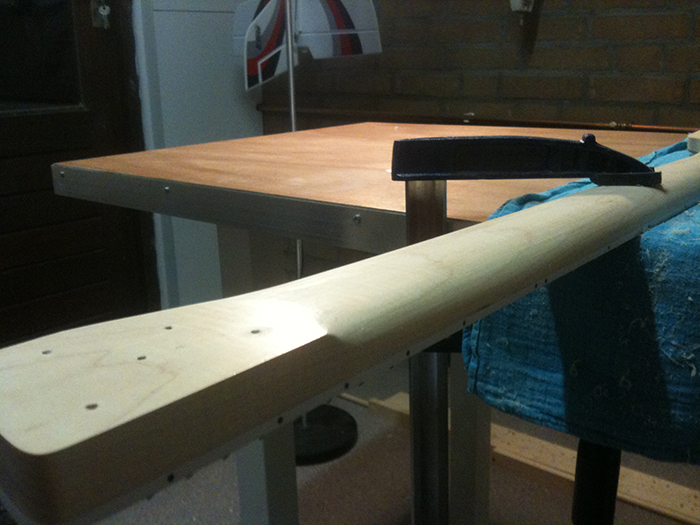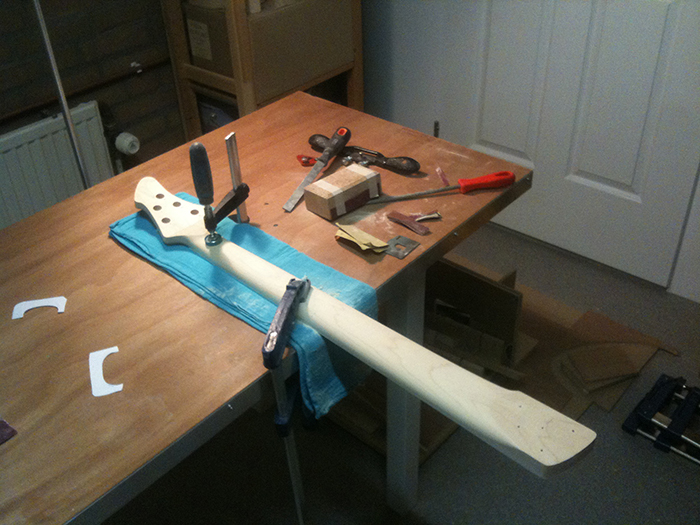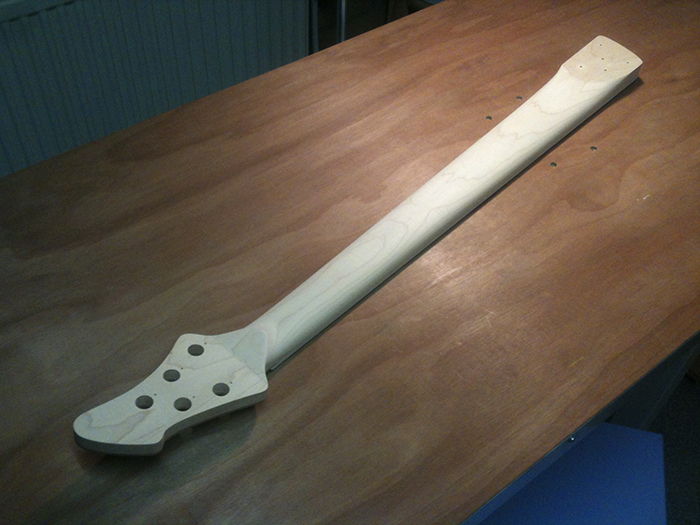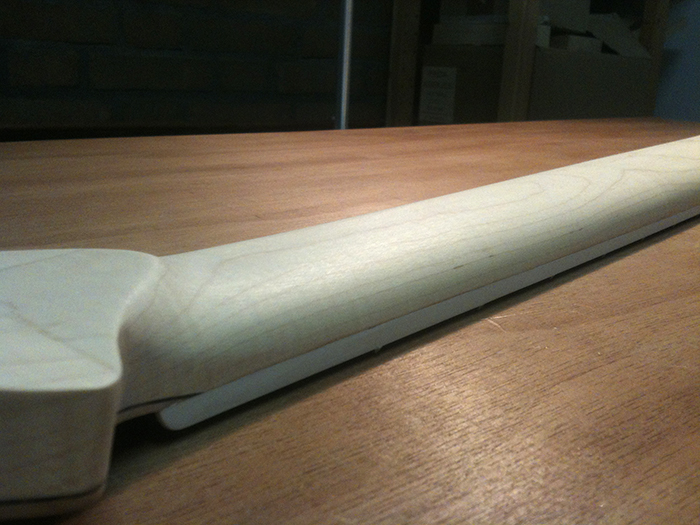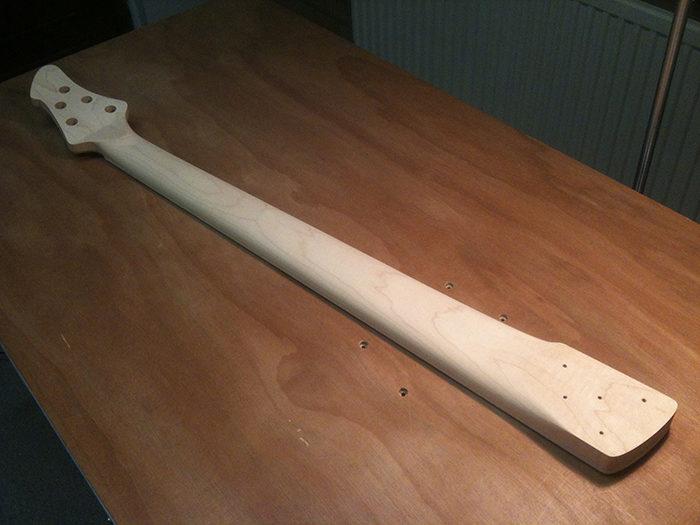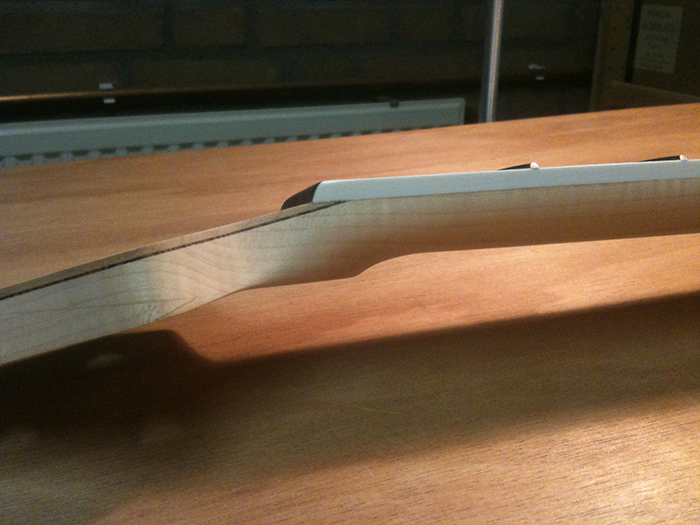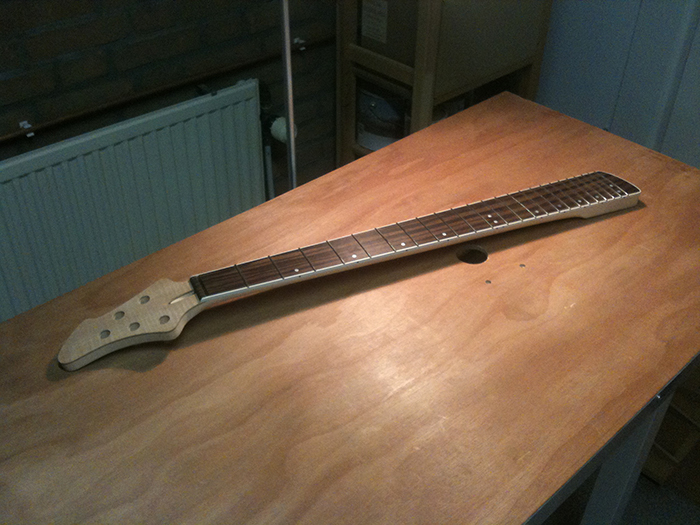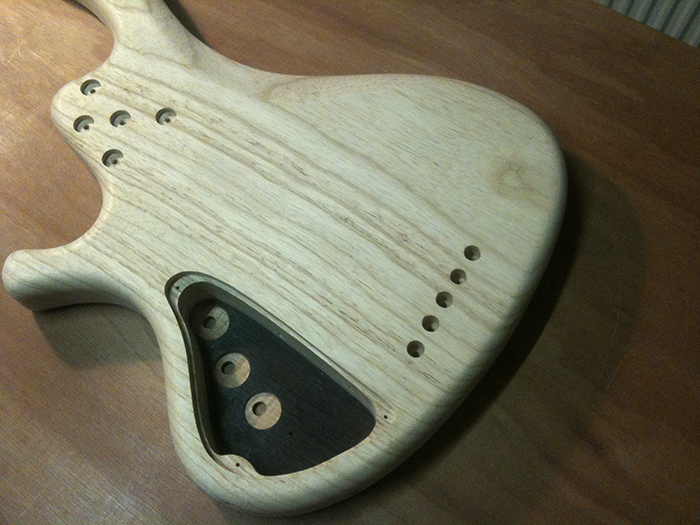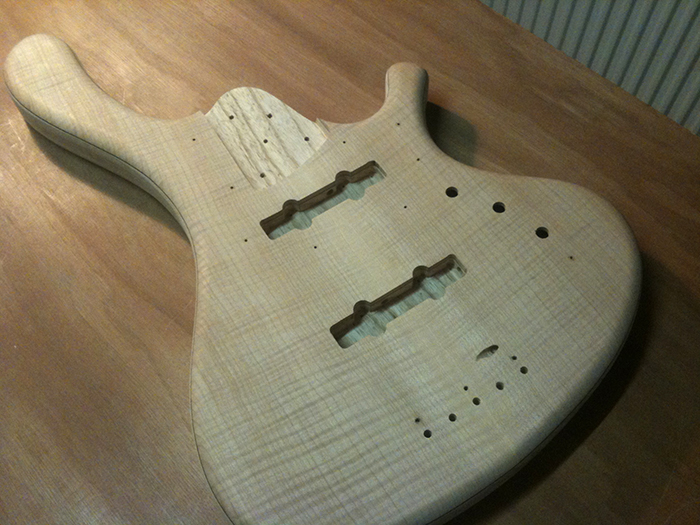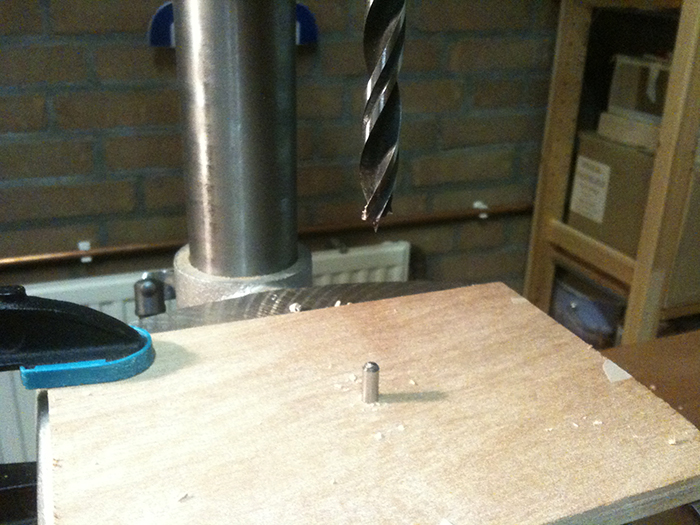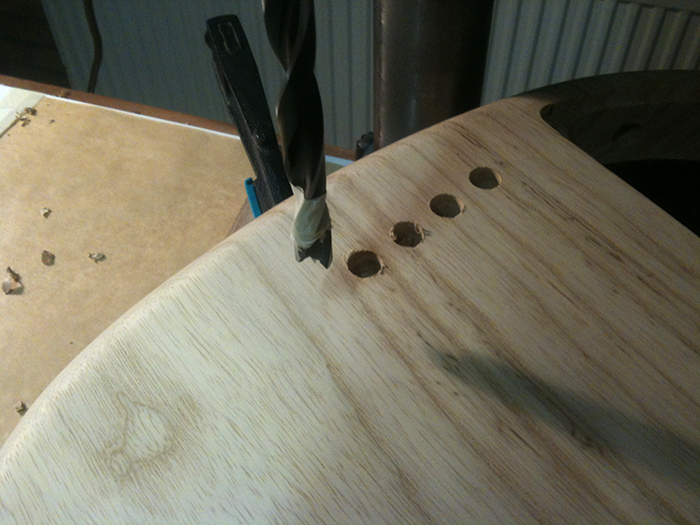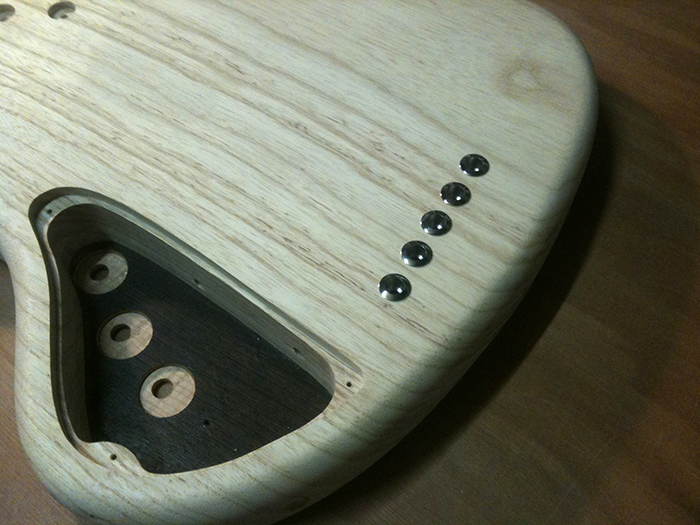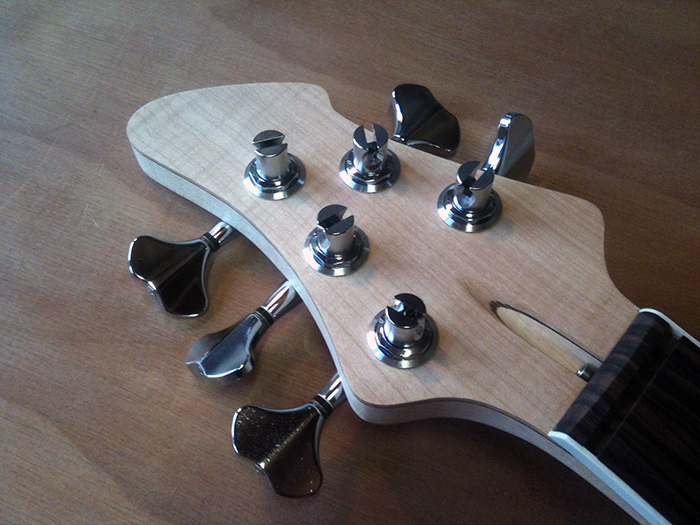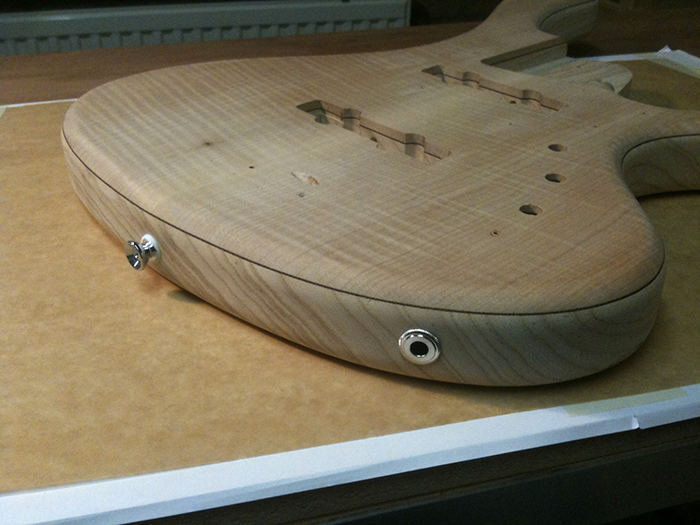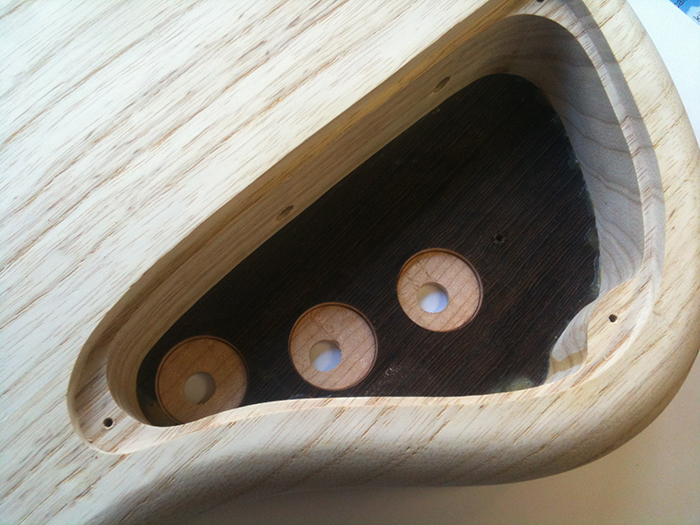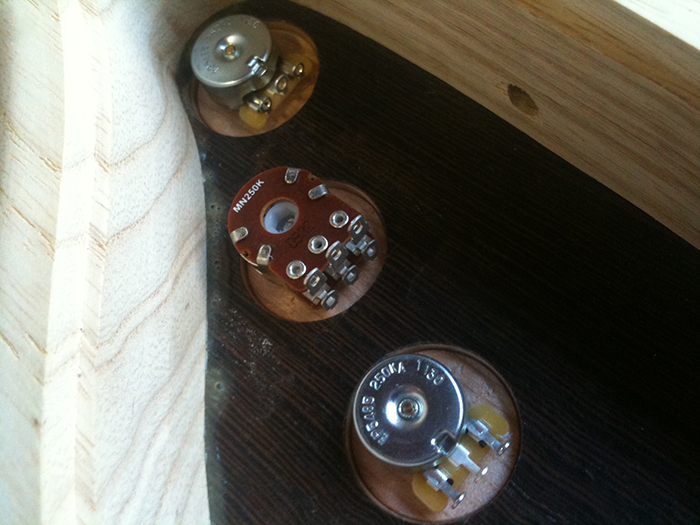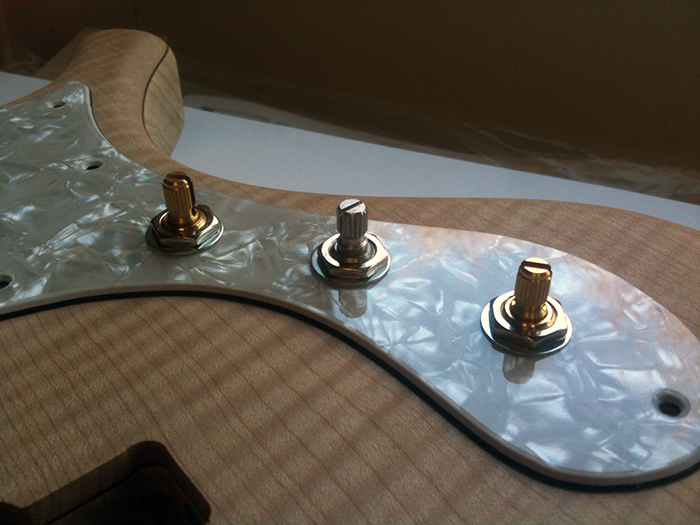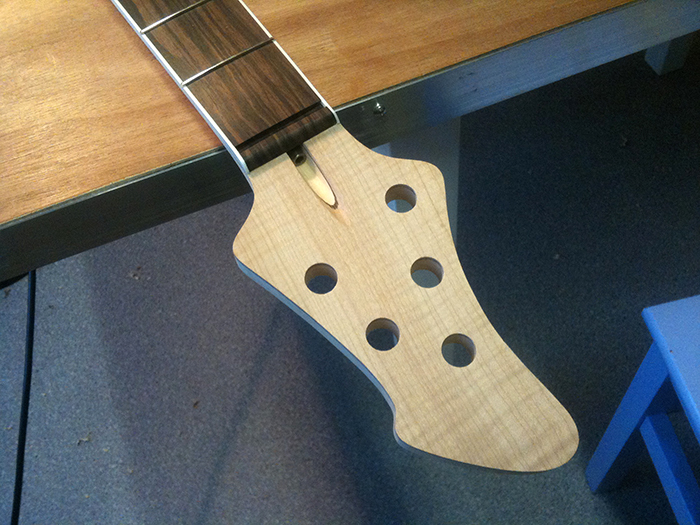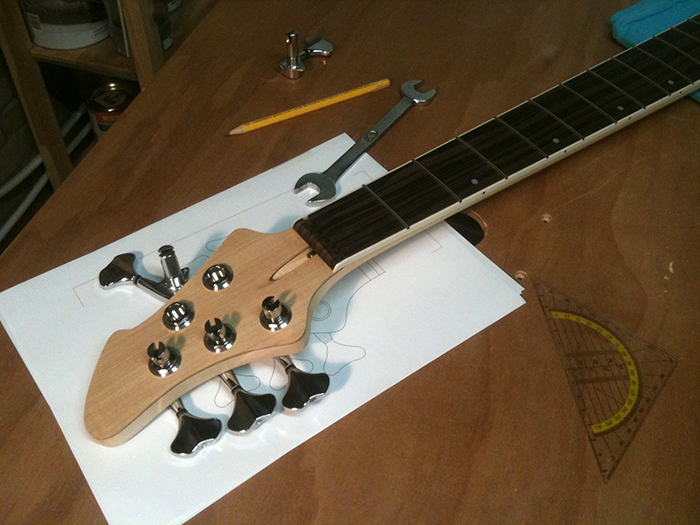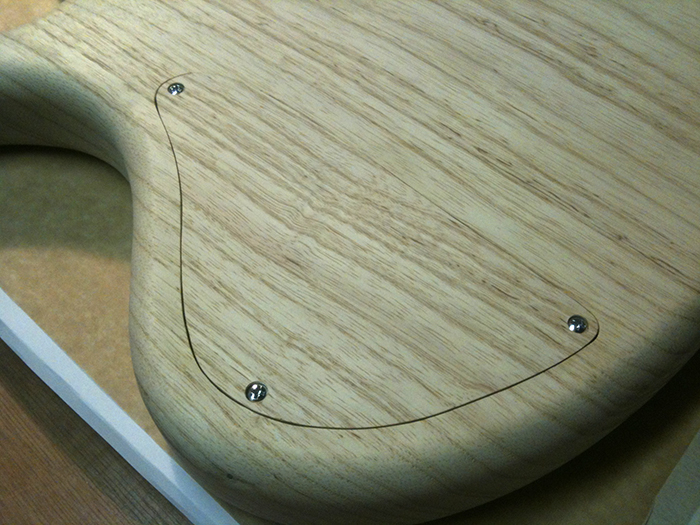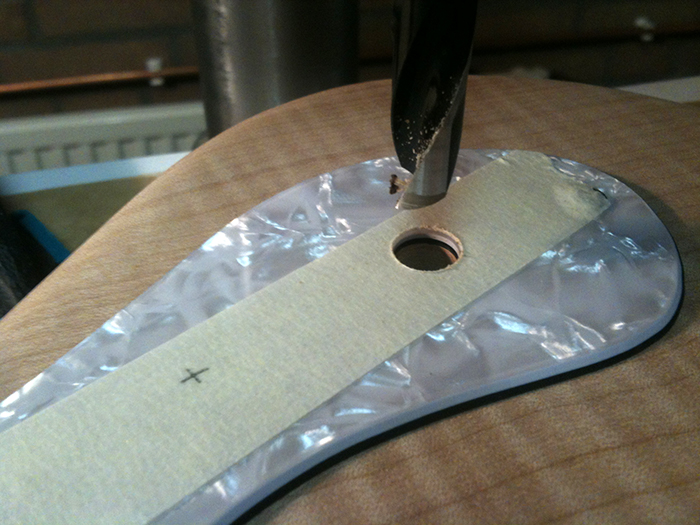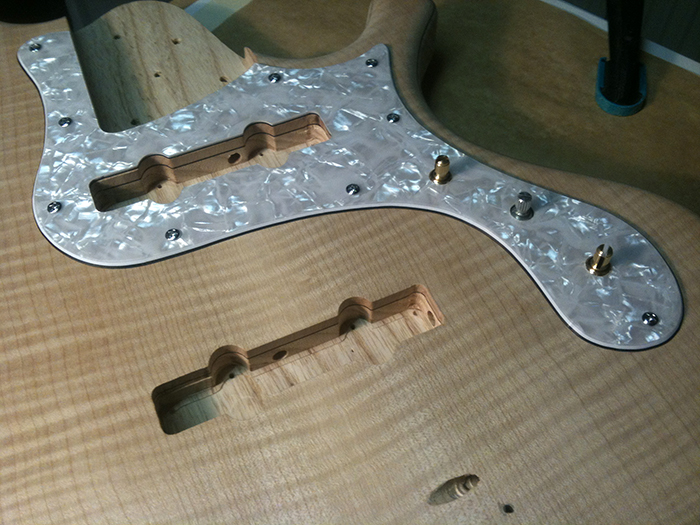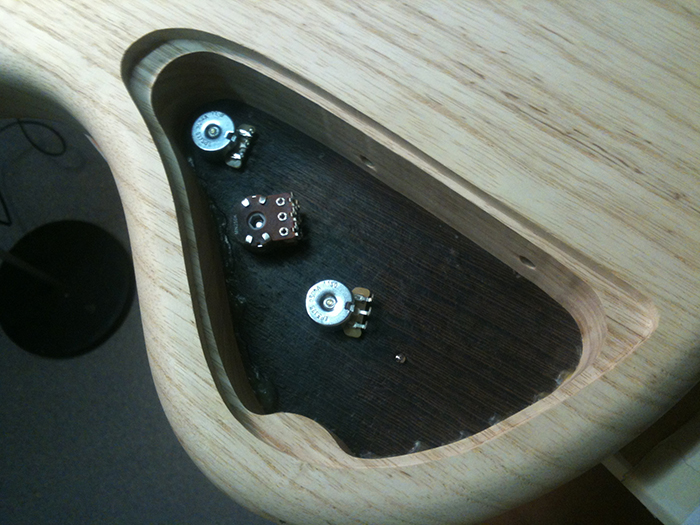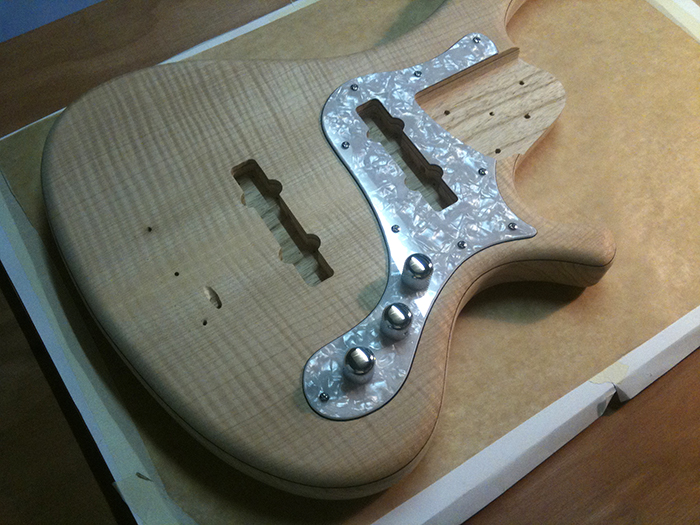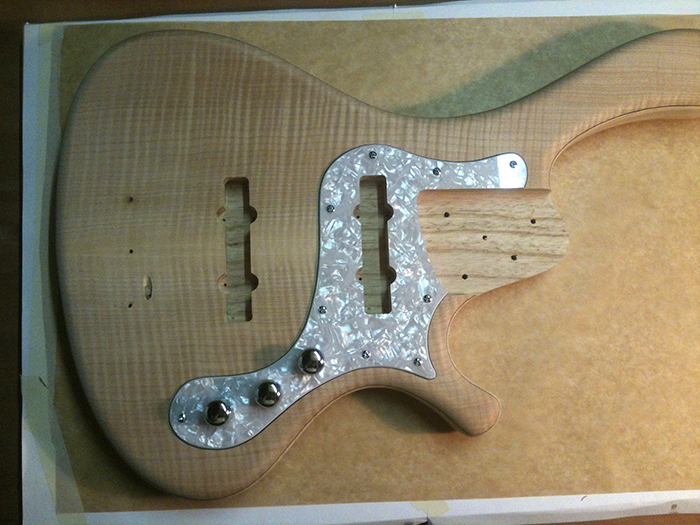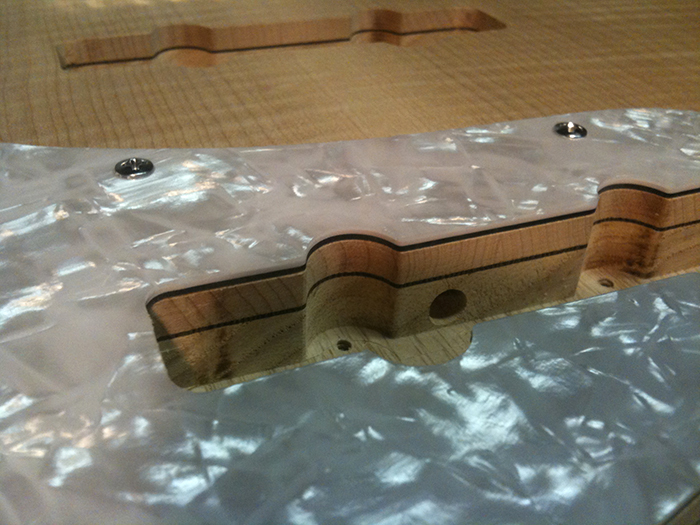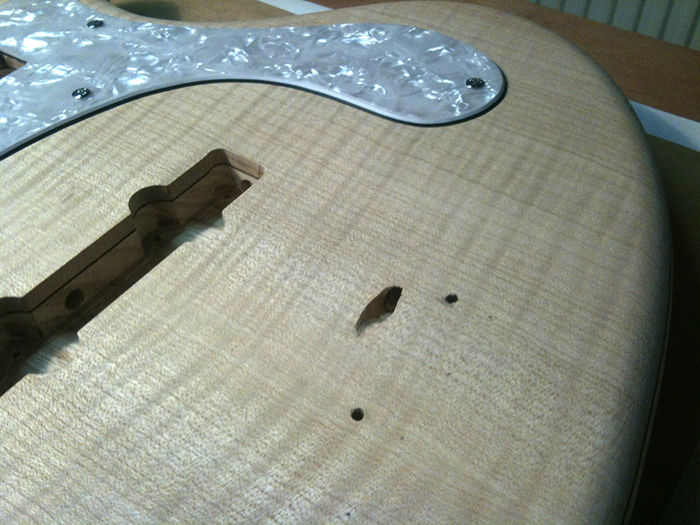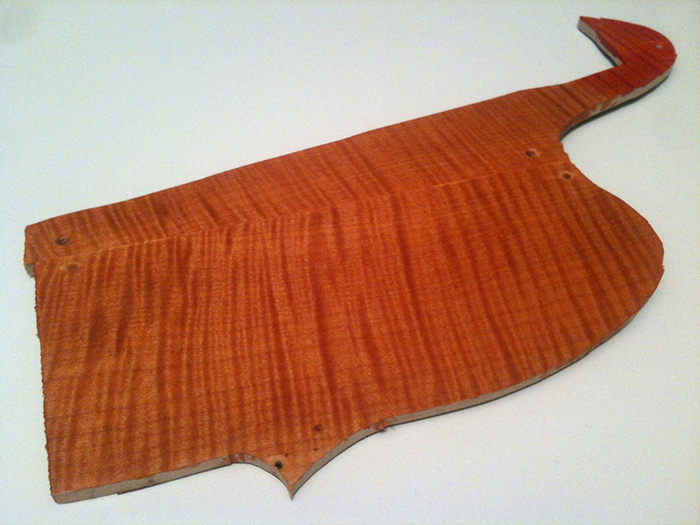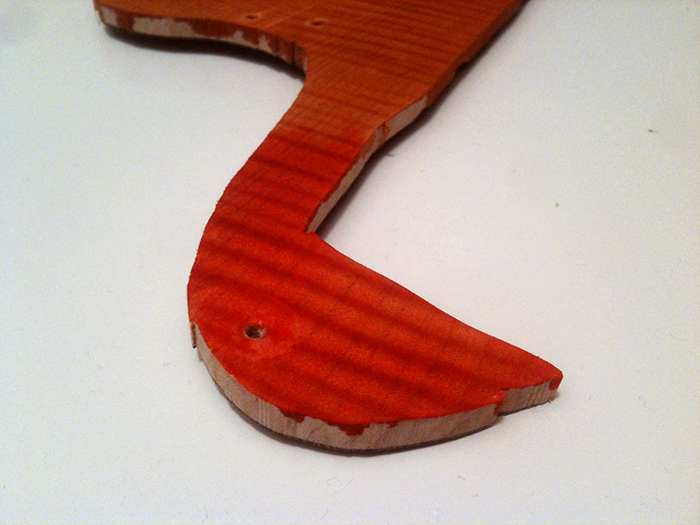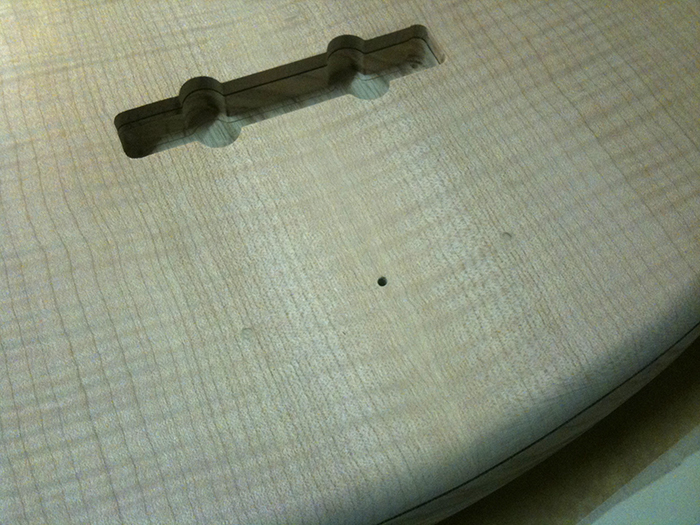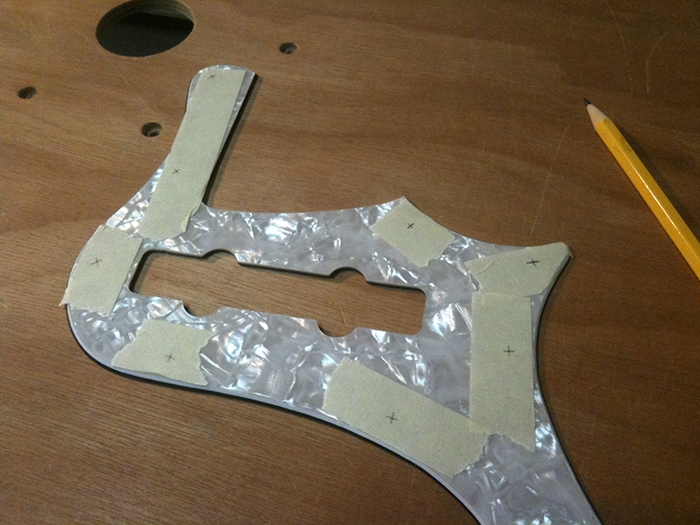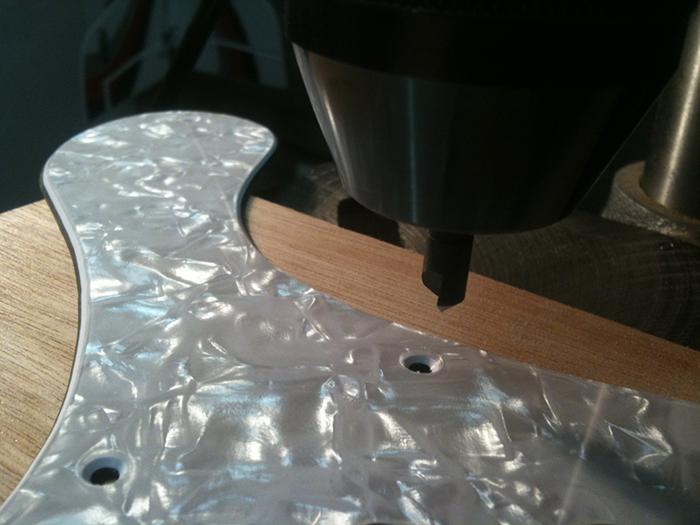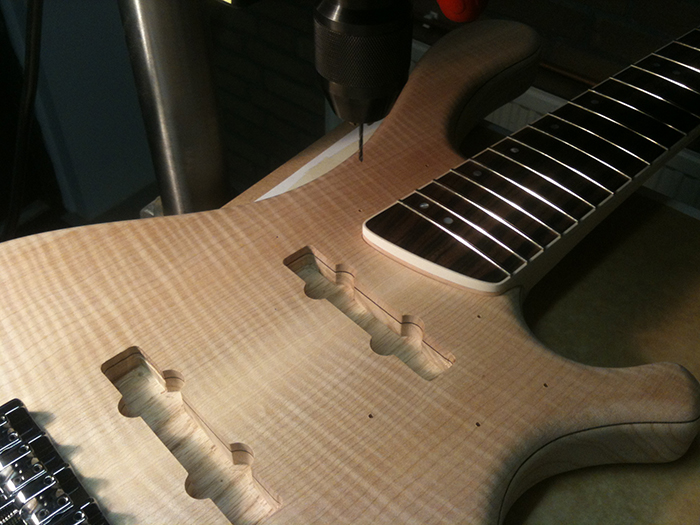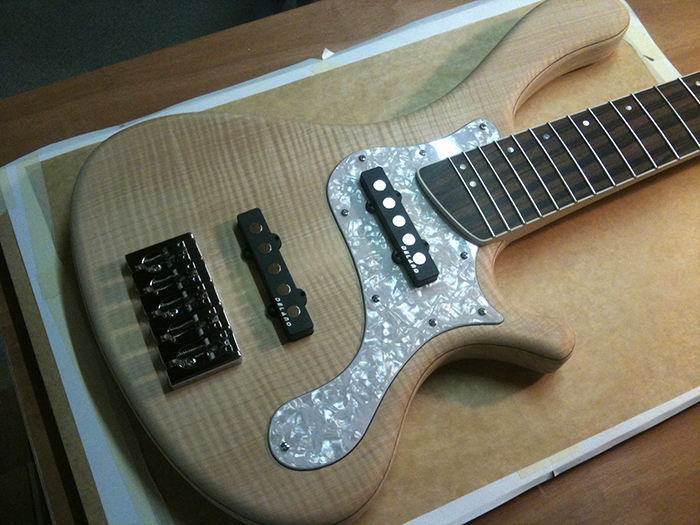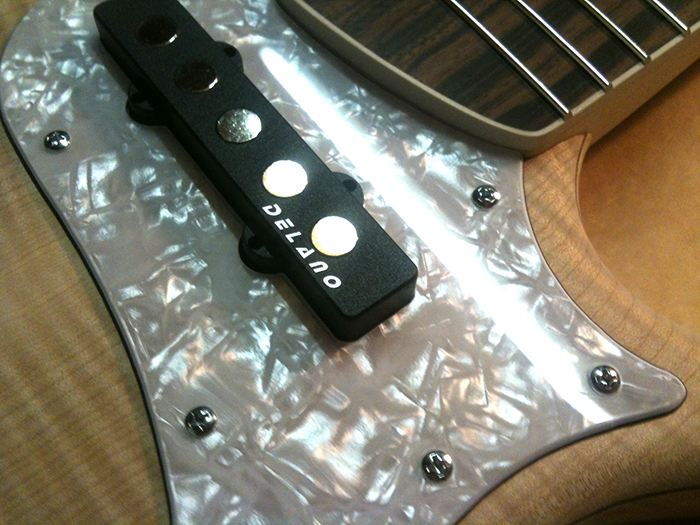This is my second build and a truly scratch-built bass; I designed everything myself – the shape, the string layout, all dimensions and the complete configuration. I’ve only used a plunge router, a drill (press) and a jigsaw as power tools; the rest is done by hand. This blog is an extensive diary of my adventures as an amateur luthier.
Category Archives: Paradox J5
The nut
Tonight I did some minor things. Checked the profile and a few other details, and just thought about how I like it so far and what could be improved in any way. The neck pocket still is a bit wide, but if I wet the sides of the neck and the sides of the pocket (hoping to simulate the finish) it already fits a bit better. I would liked to have a very tight fit, but that’s a passed opportunity. I think the ferrules would be okay anyhow, without any support (tried to make wooden washers, but the result wasn’t up to my expectations), since everybody convinced me it shouldn’t be a problem. I like the profile of the neck very much and I think it’s finished, although I still feel others might take it a little further and have a more sloped profile towards the edges and maybe a thinner profile altogether. Mine is 21.35 mm at the first fret. Not sure if I keep it this way, but we’ll see.
Lastly, I fit the nut. It’s a bone nut, thinned out to fit in the slot. I removed the lower corners of the nut so it would fit over the binding:
This gives a nice effect; because of the matching colour, the nut and the binding blend into each other nicely:
Of course, it needs to be trimmed from the top as well, but I first wanted it to fit into the slot.
Finished carving the neck profile
Yesterday I did another carving session, concentrating mostly on the heel transition and volute part, but also on the ’roundness’ of the neck profile, because it was still too close to being square.
You can see the transition is shorter, more abrupt, going quicker to the round shape of the neck profile, which I like better. You can also see the shape improved:
This is how I carve the neck. I use my router table utilizing the hole for the router bit to clamp it on the center of the table. It’s not ideal, but it works. I need to make a jig for this next time:
And the finished neck from a few angles, only needs a finish sand. The second picture should give a good view on the profile:
I like the volute:
And the finished product!! I’m proud on how this neck turned out . I hope it plays well.
So what’s left to do? Mainly sanding and finishing, making the nut and soldering the electronics. Then there is some fine-tuning, and I need to come up with a logo.
We’re getting close!
String through holes
I’m happy! Why?… Take a look at this:
And at the front:
This was by far the scariest task of the hole building process, even more than the bridge grounding wire channel… of course I practiced my intended method first, but still, it’s scary. So you can imagine I’m very happy with the outcome! The holes are aligned perfectly and the distance between them is als equally devided.
I marked the locations at the front, measuring them to check distance and alignment, and drilled 5 mm holes (not completely through, about 1/3" shy of the back of the body). This went well, and it has to, because this step actually determined how the result would be in the end; this step determined the precision of the alignment and the mutual distance of the holes.
After that I removed the body and drilled the 5 mm bit completely through the board that served as a drill press table extension. Then I simply put my 5 mm in that hole and put an 11 mm brad point bit in the drill press:
I flipped over the body, put it over the back end of the 5 mm drill bit with the freshly drilled holes and lowered the 11 mm drill bit, without any evidence it was in the right spot, sweat it my hands and shaking nervously (hardly exaggerating). After four holes I gained some confidence:
Luckily this method turned out to work very well and actually it was quite simple. Anyhow, I’m glad it’s over . Here’s a shot with the ferrules in:
So that’s it. All holes are drilled. Now back to the neck profile! Though I’ll have to be patient, because I can’t get any shop time in the next four days or so…
Last hardware pre-mounted
Whole lotta holes
Got some more things done tonight. Still busy drilling holes in my bass for the final assembly. First, I drilled 3 mm deep recesses with a 25 mm forstner bit for the control pots, came out nice (I know it’s _inside_ the cavity, but still…):
Kinda looks cool with the pots installed:
And now, they do fit as you can see:
I also drilled the tuner holes:
And did a test install of the tuners to determine the right angle and the screw locations:
Too late to continue now, so the actual drilling of those small holes will have too wait.
Almost there!
Control cavity issues
Just a minor update: I installed the pots and marked the size and shape of the recesses I have to make, because the shafts of the pot are not long enough to fit around the top and pickguard together. I first wanted to use a smaller forstner bit to drill out the desired shapes, but I figured the center point of the bit would then go through the entire top (which is 6 mm thick, I need a recess of at least 3 mm and the center point of the forstner bit also protrudes 3 mm). So I figured I’d better use a Dremel or a router. Alas, the Dremel was unable to reach the desired depth (I need the depth of the control cavity plus the 3 mm I want to remove) and the router just reaches the desired depth but would cover up the entire cavity, making it impossible for me to see what I’m doing… so I made some measurements and now I think a 25 mm forstner bit would remove just enough material, while I still could locate the center point inside the hole the pot goes through, to prevent drilling holes in my top around that hole. I’ll stop by the hobby store tomorrow, I hope I can find one.
After this rather time consuming adventure with no result, I only managed to do this today, but at least it’s something:
Gaining control
Received both the pots and the knobs today, so I drilled holes for the control pots tonight:
Well, that went quite well, positioning went perfect, as by design, and the pots fit well:
You can see it’s a good thing I ordered mini pots, as regular pots wouldn’t fit at all, especially the volume control. On the bright side I’ll have some room left for a future upgrade to active tone control (I reckon a Delano Sonar II and battery would still fit in there):
By the way, my top (5.5 mm) and pickguard (2.5 mm) are too thick for the control pot shafts. Long shaft pots would’ve been better, but they are not available in a mini version or as a blend pot, so I will have to drill some larger recess holes (1" in diameter and 3 mm deep) from the back to be able to install the pots. Just another thing on my list before I can start finishing the bass.
And of course some shots with the knobs on. Despite the fact that they are not closer together than normal, the small body and small pickguard make them look rather large. I’m a little bit in doubt, maybe I’ll try mini dome knobs on there… but I’m not sure. If the rest of the hardware is on I think it will balance out anyway.
Wiring channels and some colour
Yesterday I drilled the wiring channels between the pickups and to the control cavity. I also drilled the pickup attachment screw holes and… the scariest hole of them all: the grounding wire channel for the bridge! Man do I hate that. But with careful measurements and some extra care it came out the way I intended. I really haven’t been this nervous on the entire build as with this task.
Here you can see the wiring channel and some of the pickup attachment holes:
And the dreaded bridge grounding wire channel:
I also did some colouring tests. First with a local product ‘Ecoline’ from Talens, a concentrated water ink, just because I happened to have that lying around. The first test failed, trying to achieve a nice mix between sienna red, vermilion and bright yellow. It came out too orange and watery:
The second one is a small piece I painted with pure vermilion (for the first test I mixed the ink with water), and the colour came out rather nice, but I still do not like working with this product for this application. I also heared that it loses colour over time, so I better stick to commercially available dyes that are intended for this purpose.
So this was fun, but I ordered bright red and black dye (the latter to enhance the figure) right after this test. We’ll see if that works out.
Linear or logarithmic pots?
I learned that volume pots should be logarithmic (also called audio taper) and tone pots should be linear. But I saw some threads where people say you should also use a logarithmic pot for tone controls. So I did some more research and came across the following vid:
http://www.youtube.com/watch?v=7ANG3OrL5HI
Of course, it’s still a personal preference, but based on these findings I am definitely going for a logarithmic pot for both volume and tone on this bass.
Just wanted to share, great to see someone demonstrating different pots for different applications (his YouTube channel contains more interesting videos covering this topic).
Mounting the pickguard
Another update!
I wasn’t satisfied with the bridge placement. I kept looking at it and it just felt wrong. After taking careful measurements I found out it sat on at an angle of about 0.3 degrees. That doesn’t look like much, but if you extend the sides of the bridge to the fingerboard, the one at the bass side was 5 mm further away from the 24th fret end than the one at the treble side. That’s not good…
So I needed to fix the bridge placement. I decided to plug the two outer holes and keep the one in the middle to pivot the bridge, then mark and drill new holes and re-attach the bridge. Yesterday I plugged the holes with a small wooden dowel and some Titebond:
Titebond cures in half an hour, but I needed it to be fully cured because the new holes would only be shifted by 0.5 mm. I let it cure overnight and today I marked the new holes, using the center screw to pivot the bridge. Next time, I’m going to use this technique right away, because it’s much easier to get it right.
Now, it’s on _perfectly_ straight. And I’m happy.
Time to move to the next assembly task. I marked the positions of all the pickguard screws through a paper template using masking tape to scribe on:
Then, I drilled all holes using a 3 mm drill bit, followed by a counter sink bit:
Marking through the freshly drilled holes onto the body and drilling 2 mm holes in the body was the next step:
Et voila:
Looking cool! Looks like a lot of screws due to the small size of the pickguard, but I like the bling-bling style of it. A close up:

